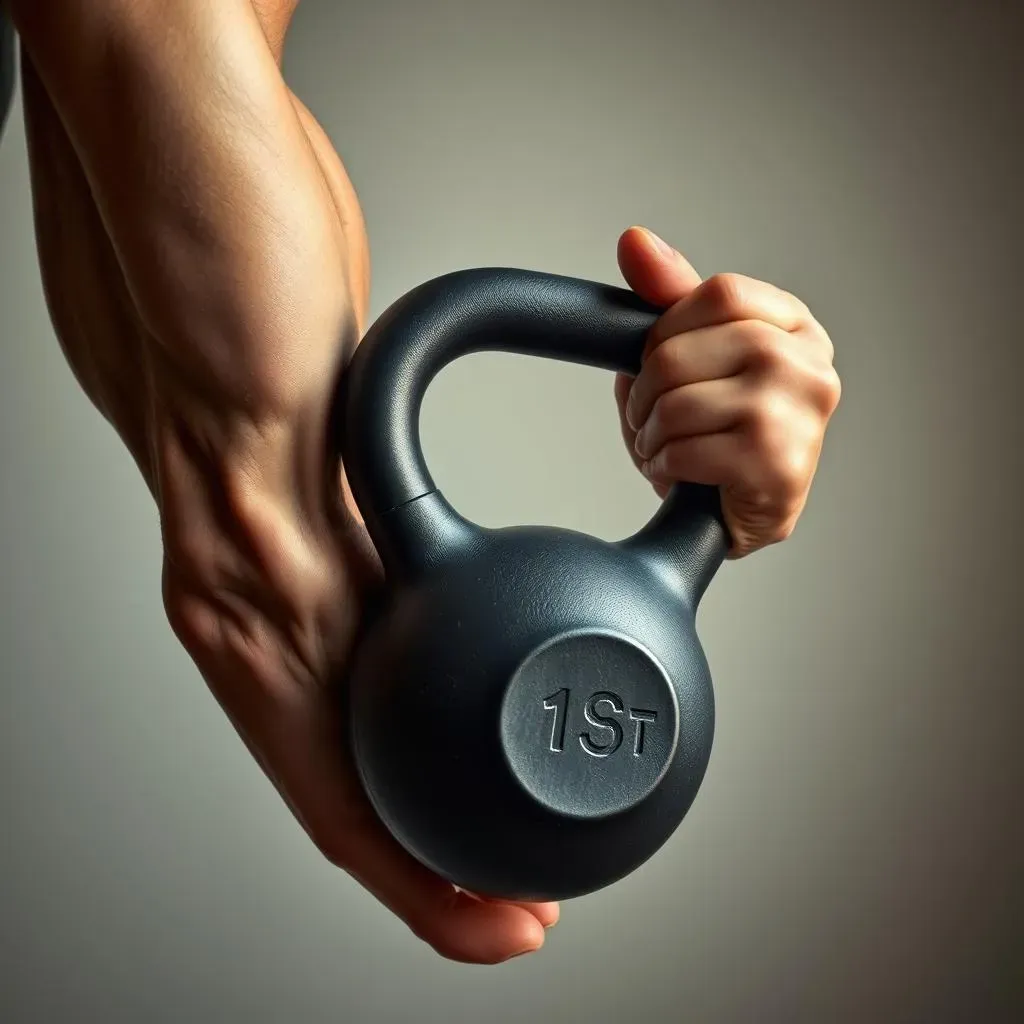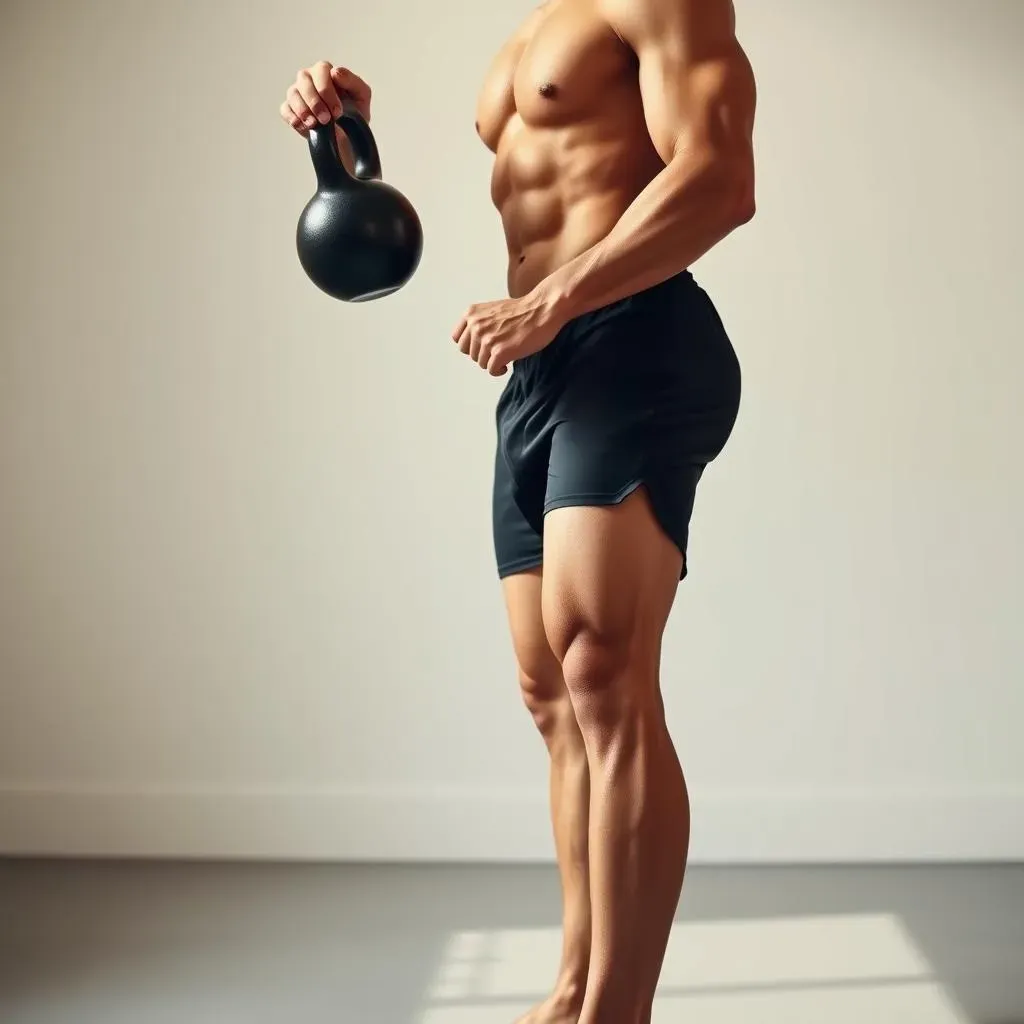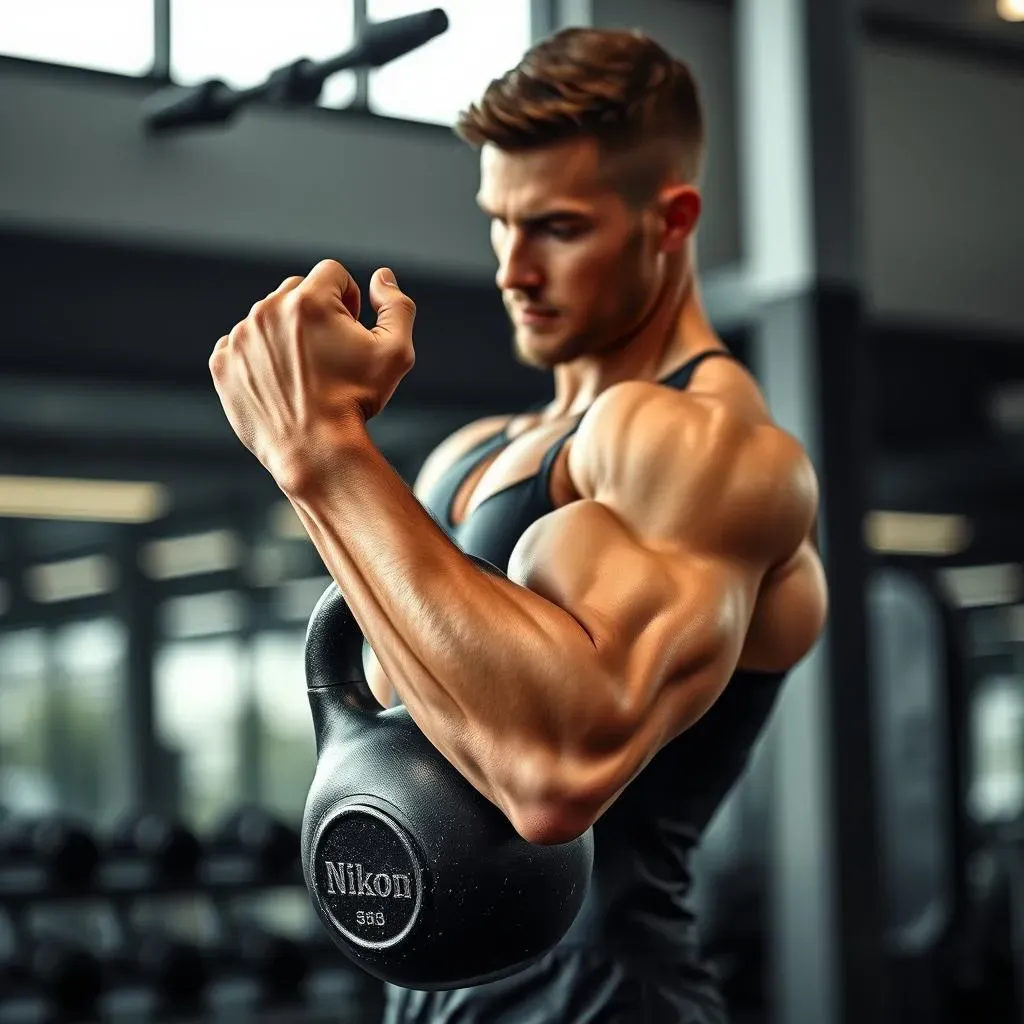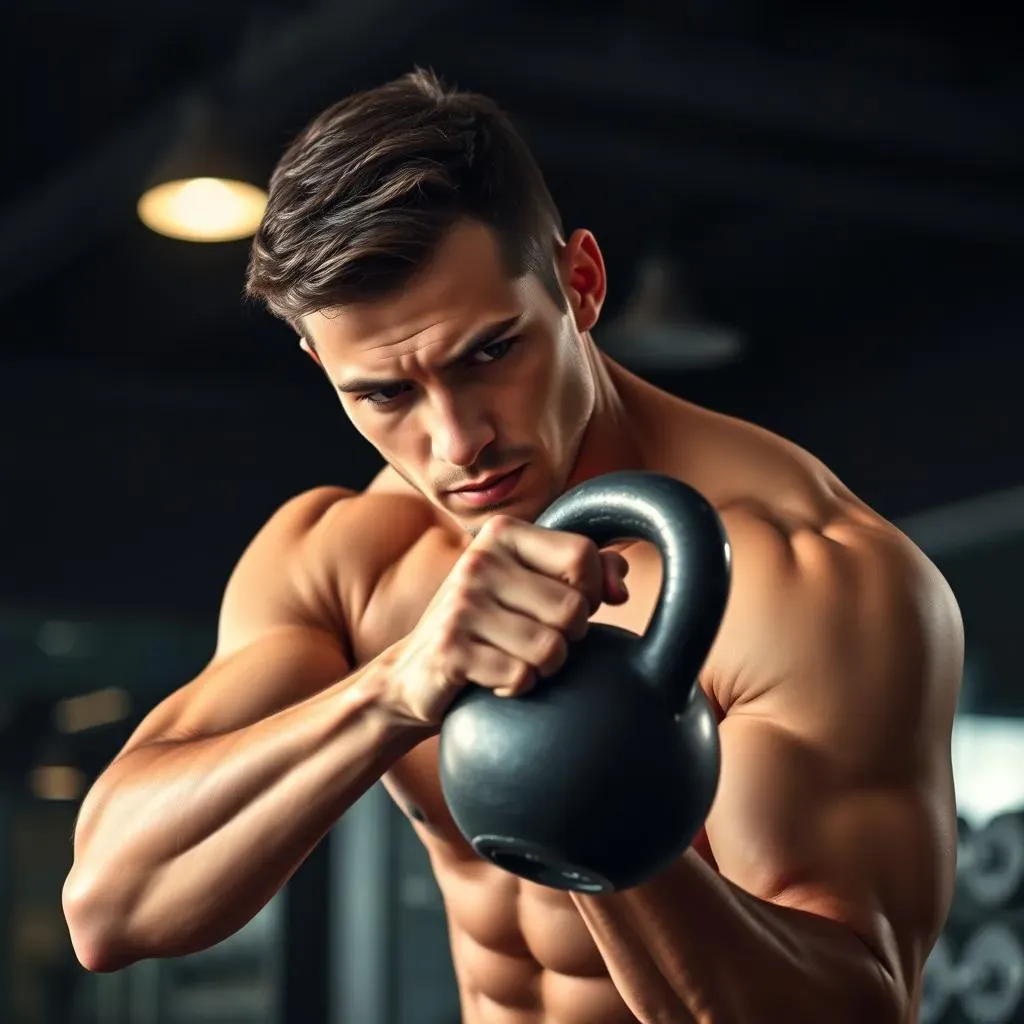Table of Contents
So, you're eyeing that kettlebell, wondering if it's just for swings and squats? You're not alone. Many gym-goers and home workout enthusiasts ponder the same thing: can you use kettlebells for bicep curls? The short answer is a resounding yes! But there’s more to it than just grabbing a bell and going to town. This article will guide you through why kettlebells can be a fantastic tool for building those biceps, and how to do it properly. I'll show you some cool variations to spice up your routine, and help you figure out if kettlebell curls are the right fit for your fitness goals. Think of this as your personal guide to unlocking a new way to pump those arms. We'll get into the nitty-gritty, and by the end, you'll be curling like a pro, or at least have a better idea of how to start. Let's get to it, shall we?
Why Kettlebells Can Be Great for Bicep Curls

Why Kettlebells Can Be Great for Bicep Curls
so you're probably thinking, "Kettlebells? For biceps? Isn't that, like, for swings and stuff?" I get it. I was skeptical too. But hear me out, because kettlebells can seriously up your bicep game. Unlike dumbbells, where the weight is evenly distributed, kettlebells have this off-center thing going on. This means your muscles work harder to stabilize the weight, not just lift it. It’s like your biceps get a bonus workout just trying to keep the bell from wobbling all over the place. This instability forces more muscle fibers to activate, leading to better overall development. Plus, the handle is thicker than a dumbbell, which can improve your grip strength and forearm development, giving you those Popeye arms you've always dreamed of (or maybe that’s just me).
How to Do Kettlebell Bicep Curls Correctly

How to Do Kettlebell Bicep Curls Correctly
Alright, so you're convinced kettlebells aren't just for show, and you're ready to curl. Fantastic! Now, let’s talk about how to do it right because bad form is like a party crasher—nobody wants it. First things first, stand with your feet about shoulder-width apart, just like you would for a regular dumbbell curl. Grab that kettlebell by the handle, not too tight, but firm. Let the bell hang down in front of you, palms facing your body. Now, here's the key: keep your elbows tucked close to your sides – no chicken wings allowed. Curl the kettlebell up towards your shoulders, squeezing your biceps at the top. Don't swing it up like you’re trying to launch a rocket. Control is the name of the game. Lower it back down slowly, resisting the urge to just let it drop. Think controlled movement, not a race.
It’s all about that mind-muscle connection, you know? Feel those biceps working. And remember, it's better to go lighter and maintain good form than to try to lift a bell that's too heavy and end up looking like a flailing fish. Trust me, your biceps will thank you. One more thing, if you’re new to this, start with a lighter kettlebell. You can always increase the weight as you get stronger. We’re not trying to set any world records here, just trying to build some solid biceps. Slow and steady wins the race, or in this case, the bicep gains.
Do | Don't |
|---|---|
Keep elbows tucked in. | Swing the weight. |
Control the movement. | Let the weight drop quickly. |
Squeeze your biceps at the top. | Use too heavy weight. |
Kettlebell Curl Variations for More Bicep Work

Kettlebell Curl Variations for More Bicep Work
Hammer Curls: The Grip Changer
so you've mastered the basic kettlebell curl, nice work. But why stop there? Let's mix things up with hammer curls. Instead of your palms facing forward like in a regular curl, keep them facing each other, like you're about to hammer a nail. This simple change in grip switches the focus to your brachialis muscle, which sits under your biceps and is crucial for overall arm size. Think of it as adding another layer to your bicep development. It's like giving your arms a surprise workout they weren't expecting, and that's a good thing. Plus, it's a great way to hit those forearms too, so you're basically getting a two-for-one deal. Who doesn't love that?
I remember when I first tried these, I was shocked at how different it felt. It’s like my arms had been stuck in one gear, and hammer curls were the key to unlocking a whole new level of arm-pumping potential. Just keep those elbows tucked in and really feel the muscle working. You'll feel the difference, trust me. The burn is real, but so are the gains.
Concentration Curls: Isolation at its Finest
Now, if you're all about feeling that sweet bicep burn, you've gotta try concentration curls with a kettlebell. Sit down on a bench or chair, with your feet flat on the floor. Place the kettlebell between your legs. Now, lean forward slightly and rest your elbow on the inside of your thigh. Curl the kettlebell up, focusing all your energy on that bicep. The key here is to really isolate the muscle, making sure it’s doing all the work, not momentum. It’s like having a heart-to-heart with your biceps, giving them all your attention. This is where you really start to feel that mind-muscle connection.
When I do these, I imagine I'm sculpting my bicep, carefully crafting it with each curl. It sounds a little dramatic, I know, but it works for me. The focus you get from this position is unmatched, and you'll be amazed at how much you can feel your bicep working. Remember to keep your movement slow and controlled, no swinging allowed. It’s not about how much weight you can lift, but how much you can make your bicep work. That’s the secret sauce.
Variation | Grip | Focus |
|---|---|---|
Hammer Curl | Palms facing each other | Brachialis & Forearms |
Concentration Curl | Standard Curl Grip | Bicep Isolation |
Are Kettlebell Curls Right for You?

Are Kettlebell Curls Right for You?
The Verdict: Who Benefits Most?
so we've talked a lot about how awesome kettlebell curls can be, but let's be real—they're not for everyone. If you're brand new to weight training, you might want to start with dumbbells first, just to get a feel for the movement and build some foundational strength. Kettlebells can be a little more challenging because of that off-center weight, so it's good to have a solid base before jumping in. But if you're already comfortable with basic curls and looking for a way to shake things up, then kettlebells are definitely worth a try. They're especially great if you want to work on your grip strength and forearm development at the same time as your biceps. It's like hitting two birds with one stone, and who doesn't love efficiency?
I've seen people of all fitness levels use kettlebells for curls, from seasoned lifters to those just starting out. The key is to listen to your body and start with a weight that feels challenging but not overwhelming. If you're feeling any pain, stop and reassess your form. It's better to be cautious than to push yourself too hard and end up injured. Remember, fitness is a journey, not a sprint. And kettlebell curls can be an awesome part of that journey, if you approach them with the right mindset and technique.
When to Maybe Skip the Kettlebell Curls
Now, let's talk about when kettlebell curls might not be the best option. If you're dealing with any wrist or elbow issues, you might want to hold off for a bit, or at least consult with a physical therapist before trying them. The unique weight distribution of kettlebells can put extra stress on your joints, so it’s important to make sure you're not going to aggravate any existing problems. Also, if you're someone who tends to rely on momentum to lift weights, kettlebell curls might not be the best fit for you. The instability of the kettlebell makes it crucial to use controlled movements, and if you're swinging the weight around, you're not going to get the full benefits, and you could end up hurting yourself. It’s like trying to build a house on a shaky foundation - it's not gonna end well.
I’m not saying that kettlebell curls are dangerous, but they do require a certain level of body awareness and control. If you're new to training, it might be better to master the basic dumbbell curl first, and then move onto kettlebells once you feel more comfortable with the movement. The same goes for people who are recovering from an injury. Always prioritize proper form and listen to what your body is telling you. Fitness should make you feel good, not beat up. So, if something doesn’t feel right, don’t be afraid to adjust or try a different exercise. There are plenty of ways to build strong biceps, and finding what works best for you is key.
Consider Kettlebell Curls If: | Maybe Skip If: |
|---|---|
You want to improve grip strength. | You have wrist or elbow issues. |
You want to add variety to your bicep training. | You rely on momentum to lift weights. |
You are comfortable with basic bicep curls. | You are brand new to weight training. |
Wrapping Up Your Kettlebell Curl Journey
So, can you use kettlebells for bicep curls? Absolutely! They’re not just for swings and squats, but a versatile tool to add to your arm day arsenal. While dumbbells might be the go-to for many, kettlebells offer a unique challenge and can spice up your routine. Remember, it's all about proper form, control, and progressive overload. Don't be afraid to experiment with variations, find what works best for you, and most importantly, listen to your body. Whether you are a seasoned lifter or just starting out, incorporating kettlebell curls can be an effective way to build strength and add some fun to your workout. Now get out there and start curling!